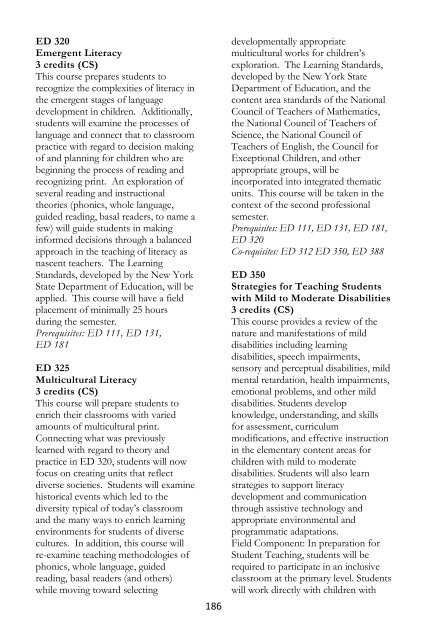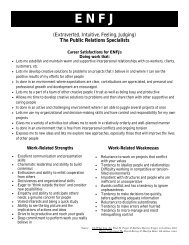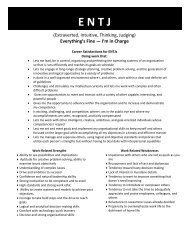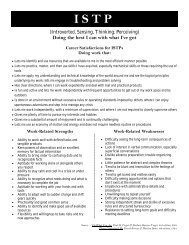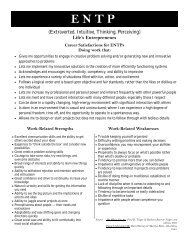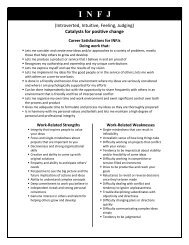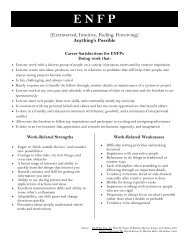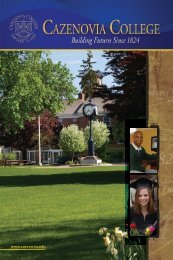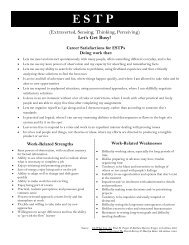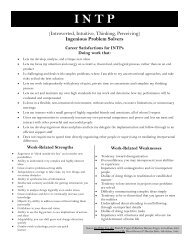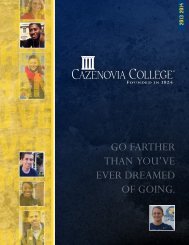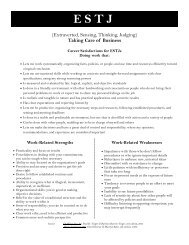Named one of “America’s Best Colleges” by U.S News & World Report
2011-12 Academic Catalog - Cazenovia College
2011-12 Academic Catalog - Cazenovia College
- No tags were found...
You also want an ePaper? Increase the reach of your titles
YUMPU automatically turns print PDFs into web optimized ePapers that Google loves.
ED 320<br />
Emergent Literacy<br />
3 credits (CS)<br />
This course prepares students to<br />
recognize the complexities <strong>of</strong> literacy in<br />
the emergent stages <strong>of</strong> language<br />
development in children. Additionally,<br />
students will examine the processes <strong>of</strong><br />
language and connect that to classroom<br />
practice with regard to decision making<br />
<strong>of</strong> and planning for children who are<br />
beginning the process <strong>of</strong> reading and<br />
recognizing print. An exploration <strong>of</strong><br />
several reading and instructional<br />
theories (phonics, whole language,<br />
guided reading, basal readers, to name a<br />
few) will guide students in making<br />
informed decisions through a balanced<br />
approach in the teaching <strong>of</strong> literacy as<br />
nascent teachers. The Learning<br />
Standards, developed <strong>by</strong> the New York<br />
State Department <strong>of</strong> Education, will be<br />
applied. This course will have a field<br />
placement <strong>of</strong> minimally 25 hours<br />
during the semester.<br />
Prerequisites: ED 111, ED 131,<br />
ED 181<br />
ED 325<br />
Multicultural Literacy<br />
3 credits (CS)<br />
This course will prepare students to<br />
enrich their classrooms with varied<br />
amounts <strong>of</strong> multicultural print.<br />
Connecting what was previously<br />
learned with regard to theory and<br />
practice in ED 320, students will now<br />
focus on creating units that reflect<br />
diverse societies. Students will examine<br />
historical events which led to the<br />
diversity typical <strong>of</strong> today‘s classroom<br />
and the many ways to enrich learning<br />
environments for students <strong>of</strong> diverse<br />
cultures. In addition, this course will<br />
re-examine teaching methodologies <strong>of</strong><br />
phonics, whole language, guided<br />
reading, basal readers (and others)<br />
while moving toward selecting<br />
186<br />
developmentally appropriate<br />
multicultural works for children‘s<br />
exploration. The Learning Standards,<br />
developed <strong>by</strong> the New York State<br />
Department <strong>of</strong> Education, and the<br />
content area standards <strong>of</strong> the National<br />
Council <strong>of</strong> Teachers <strong>of</strong> Mathematics,<br />
the National Council <strong>of</strong> Teachers <strong>of</strong><br />
Science, the National Council <strong>of</strong><br />
Teachers <strong>of</strong> English, the Council for<br />
Exceptional Children, and other<br />
appropriate groups, will be<br />
incorporated into integrated thematic<br />
units. This course will be taken in the<br />
context <strong>of</strong> the second pr<strong>of</strong>essional<br />
semester.<br />
Prerequisites: ED 111, ED 131, ED 181,<br />
ED 320<br />
Co-requisites: ED 312 ED 350, ED 388<br />
ED 350<br />
Strategies for Teaching Students<br />
with Mild to Moderate Disabilities<br />
3 credits (CS)<br />
This course provides a review <strong>of</strong> the<br />
nature and manifestations <strong>of</strong> mild<br />
disabilities including learning<br />
disabilities, speech impairments,<br />
sensory and perceptual disabilities, mild<br />
mental retardation, health impairments,<br />
emotional problems, and other mild<br />
disabilities. Students develop<br />
knowledge, understanding, and skills<br />
for assessment, curriculum<br />
modifications, and effective instruction<br />
in the elementary content areas for<br />
children with mild to moderate<br />
disabilities. Students will also learn<br />
strategies to support literacy<br />
development and communication<br />
through assistive technology and<br />
appropriate environmental and<br />
programmatic adaptations.<br />
Field Comp<strong>one</strong>nt: In preparation for<br />
Student Teaching, students will be<br />
required to participate in an inclusive<br />
classroom at the primary level. Students<br />
will work directly with children with


